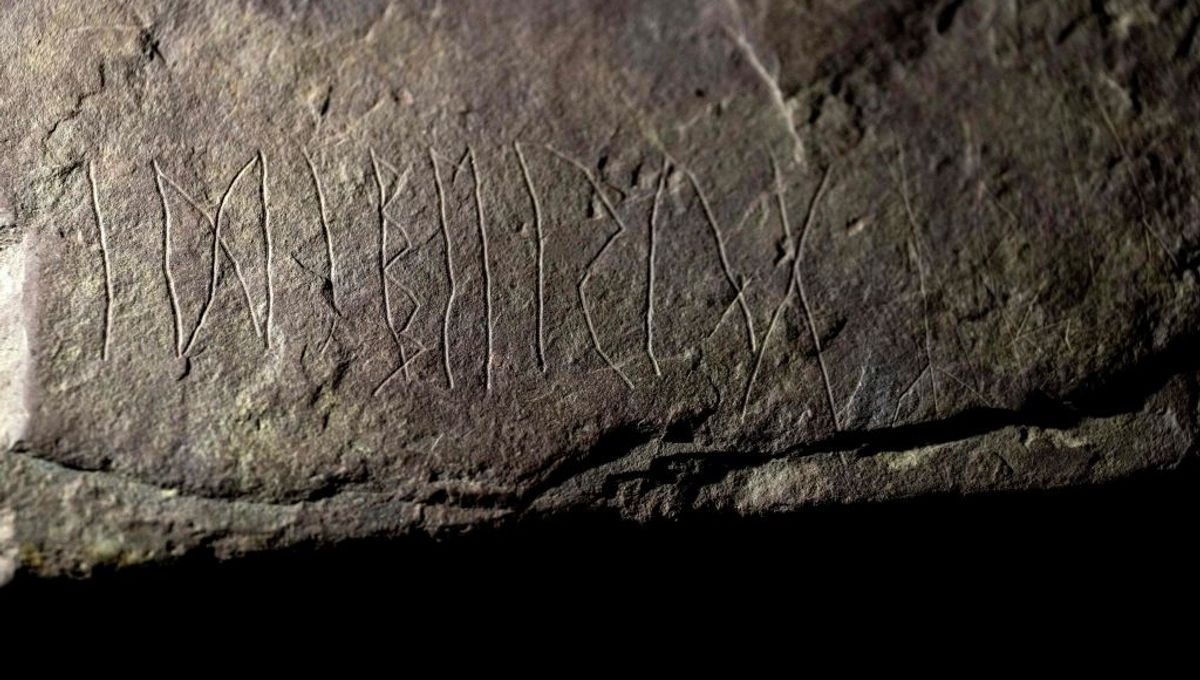
Archaeologists believe they have found the world’s oldest runestone in Norway. With inscriptions dating back 2,000 years, this laptop-sized stone could shine a light on the development and use of runic writing in ancient Scandinavia.
The runestone was first discovered at an ancient grave near Tyrifjorden in eastern Norway during the autumn of 2021 by archaeologists at the Museum of Cultural History, part of the University of Oslo.
It has been named the Svingerud Stone as it was discovered at a site known as Svingerudsteinen. Runestones are stones inscribed with runic letters that were often erected at gravesites. This one is a 31 by 32 centimeter (approximately 12 by 12 inch) block of reddish-brown sandstone and its front is finely inscribed with eight runes along with a bunch of other carvings.
Radiocarbon dates of bone and charcoal at the grave suggest it dates to around 1 to 250 CE, making it several centuries older than previously known runestones, meaning the inscriptions are among the earliest examples of words recorded in writing in Scandinavia.
It was once held that the oldest runic artifact was the Meldorf fibula inscription found on a brooch that dates to approximately 160 CE. However, there is some doubt over whether it is truly runic or, in fact, used Latin letters. With the newly discovered Svingerud Stone, there is little doubt it’s inscribed with runes.
Runes are the letters in a set of alphabets that were used by the Germanic peoples of Central Europe and Scandinavia from the 1st century CE until they adopted the Latin alphabet. That includes the legendary Vikings who ruled in the roost in Scandinavia (and far beyond) around 793 to sometime in 1000 CE
It is understood that the early Scandinavian alphabet was essentially copied from the Latin alphabet used by the ancient Romans. This is backed up by archaeological evidence that shows Romans and Scandinavian tribes were starting to come into contact with each other around this time.
The message on the Svingerud Stone is hard to decipher since it’s written in an archaic form of the runic alphabet, known as futhark, which differs from the characters used later in the Viking Age and the Middle Ages. Paired with this, the runestone features a number of squiggles and symbols that aren’t understood by people of the present day.
In Latin letters, the eight runes spell out “idiberug.” The researchers speculate that the runestone is referring to a woman named Idibera who was perhaps buried in the grave where it was originally found.
“The text possibly refers to a woman called Idibera and the inscription could mean ‘For Idibera.’ Other possibilities are that idiberug is the rendering of a name such as Idibergu/Idiberga, or perhaps the kin name Idiberung,” Kristel Zilmer, Professor of Written Culture and Iconography at the Museum of Cultural History, said in a statement.
As for the other instructions, they suspect they were simply just meaningless doodles.
“The stone has several kinds of inscriptions. Some lines form a grid pattern and there are small zigzag figures and other interesting features. Not all inscriptions have a linguistic meaning. It’s possible that someone has imitated, explored or played with the writing. Maybe someone was learning how to carve runes,” added Professor Zilmer.
Source Link: World's Oldest Runestone Found In Norway May Speak Of A Mysterious Woman